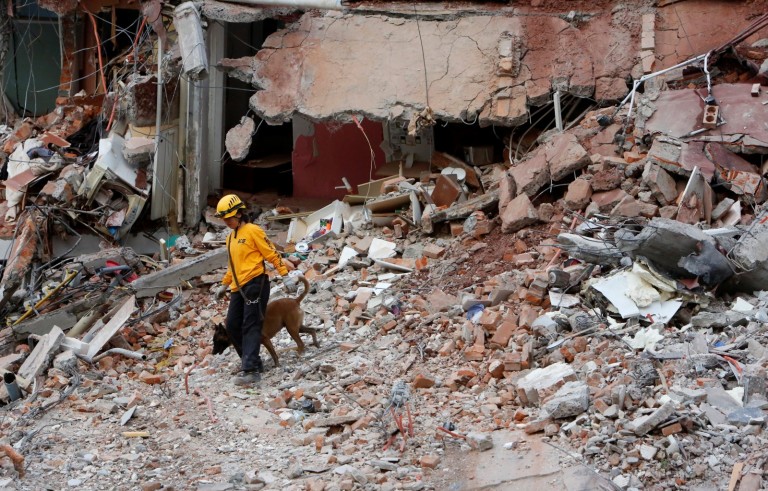JUDY WOODRUFF: Yesterday's earthquake in Mexico was the second in less than two weeks and brought back memories of the terrible tremor that hit 30 years to the day yesterday.
So many are asking about why the country and region seem more prone to these earthquakes.
We look at those questions with a seismologist.
She is Lucy Jones. And this is for our Leading Edge science segment this week.
Lucy Jones, welcome to the program. We have been watching these heartbreaking scenes of trying to get people out of collapsed buildings, including a school, young children.
Is this part of Mexico particularly vulnerable to this kind of quake?
LUCY JONES, Seismologist: Well, there's one issue with Mexico City, which is that it's built in an old lake bed. The ground underneath it is extremely soft and wet.
When the seismic waves come from wherever they come from and into the soft soil, they get larger. They have to slow down. They have to carry the same amount of energy. They get bigger.
That happens in any soil. Here in Los Angeles, we might have a factor of two or three amplification. In Mexico City, it's a factor of 100. So, every earthquake is much worse when it's in Mexico City.
JUDY WOODRUFF: So, are buildings typically built that much stronger to withstand earthquakes in these situations?
LUCY JONES: When you say how is a building built, there are buildings built currently right now to the best code which are trying to be handling that, but older structures haven't had that advantage.
And, you know, there was that horrible earthquake in 1985 that damaged and got rid of a lot of buildings and helped understand what's going on with this lake bed.

But it was so far away — it was actually 250 miles away from the city — that by the time the waves got there, they were only very slow waves. And that's what got amplified. So, very big buildings got damaged in that event, but the smaller ones just didn't really respond to those very distant waves.
This time around, now the earthquake is much closer, even though it's somewhat smaller. It's closer, so the waves are coming in big. They still have their high energy. And we're seeing a lot of damage to those smaller buildings.
As far as I can tell, a lot of them are older buildings. Everywhere in the world, your building code is not retroactive. Your building is as good as the code that was in place when it was built. If that's 1940, it's not much of a code.
JUDY WOODRUFF: Am I right that there have been not been aftershocks, Lucy Jones? And, if not, why? Isn't that unusual?
LUCY JONES: There haven't been large aftershocks. There are still plenty of aftershocks. So far, they have all been below magnitude 5.
Main shock of magnitude 7, that's on the lower edge of the distribution, but it's still easily within the normal range. Same thing applied to the Loma Prieta earthquake in San Francisco in 1989.
What we see, though, is, when earthquakes are deeper, they're likely to have these smaller aftershock sequences. And this earthquake started 30 miles below the earth's surface.
JUDY WOODRUFF: And just finally, this is the second earthquake to hit Mexico in a couple of weeks. Everybody down there has to be on edge.
LUCY JONES: Well, I think now seismologists would look at the magnitude 7 as a sort of extended aftershock or a distant triggered earthquake.
Usually, we use the word aftershocks for the large majority of triggered events that are very near the first one. But we see this ability to trigger out to greater distances, maybe 300 or 500 miles, to a magnitude 8.
And so this earthquake could have been at least hastened by the occurrence of the first magnitude 8. And it doesn't mean that you have got to have a whole lot of other earthquakes coming. But it does — emotionally, it definitely feels scary.
JUDY WOODRUFF: Seismologist Lucy Jones, we thank you very much.
LUCY JONES: Thank you for having me.












